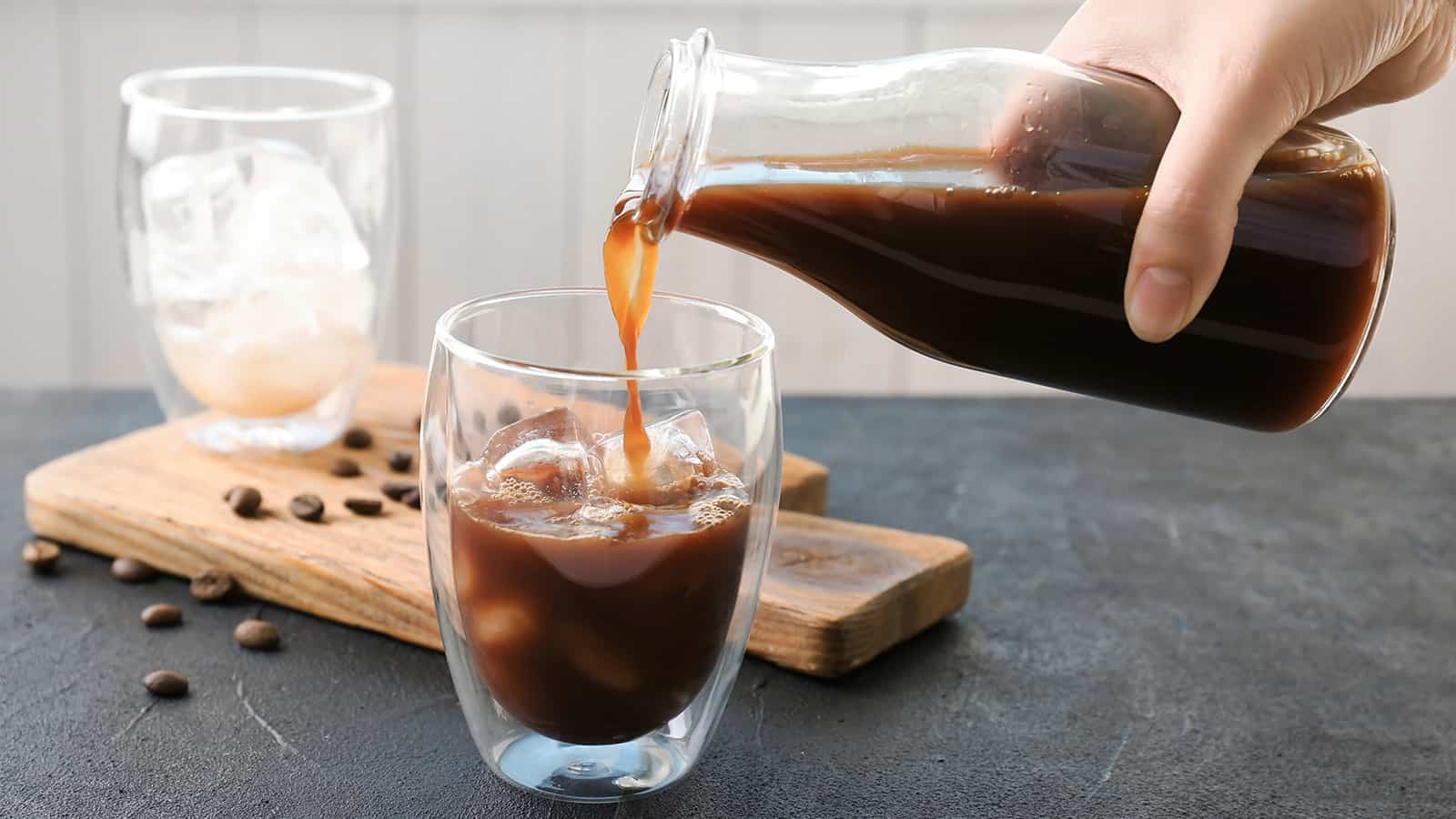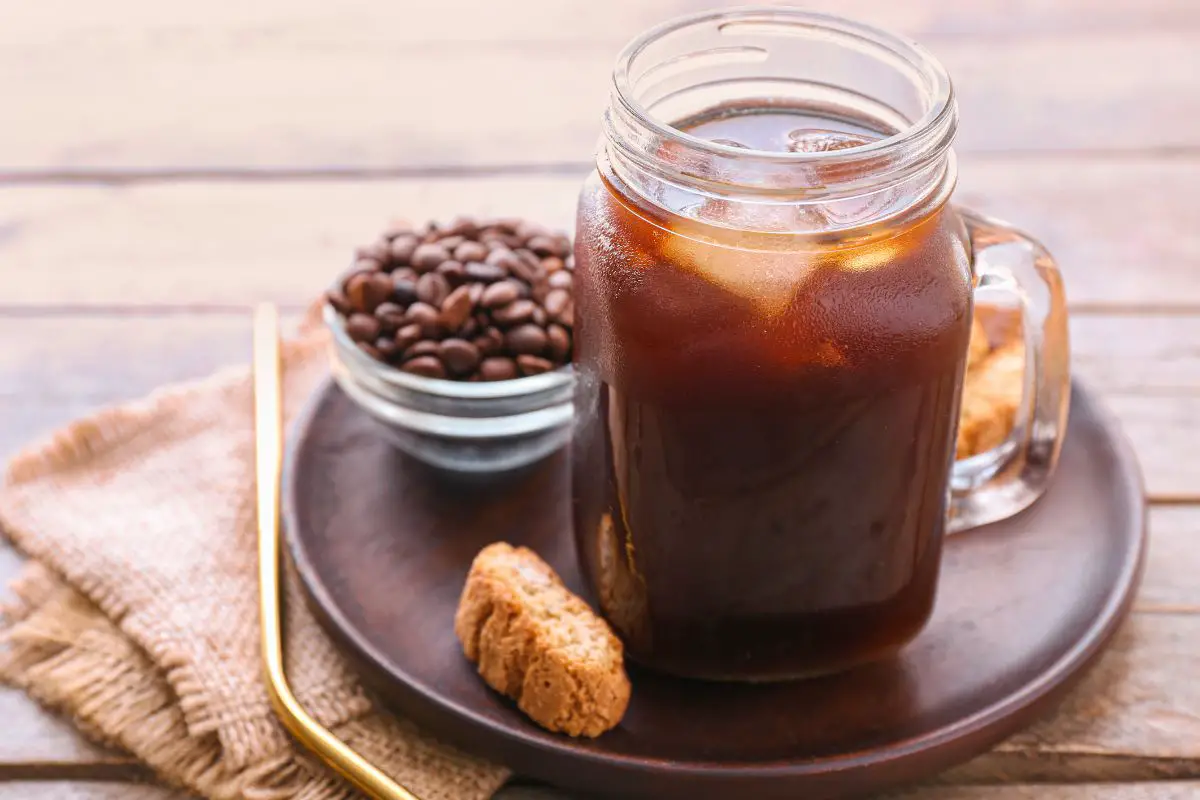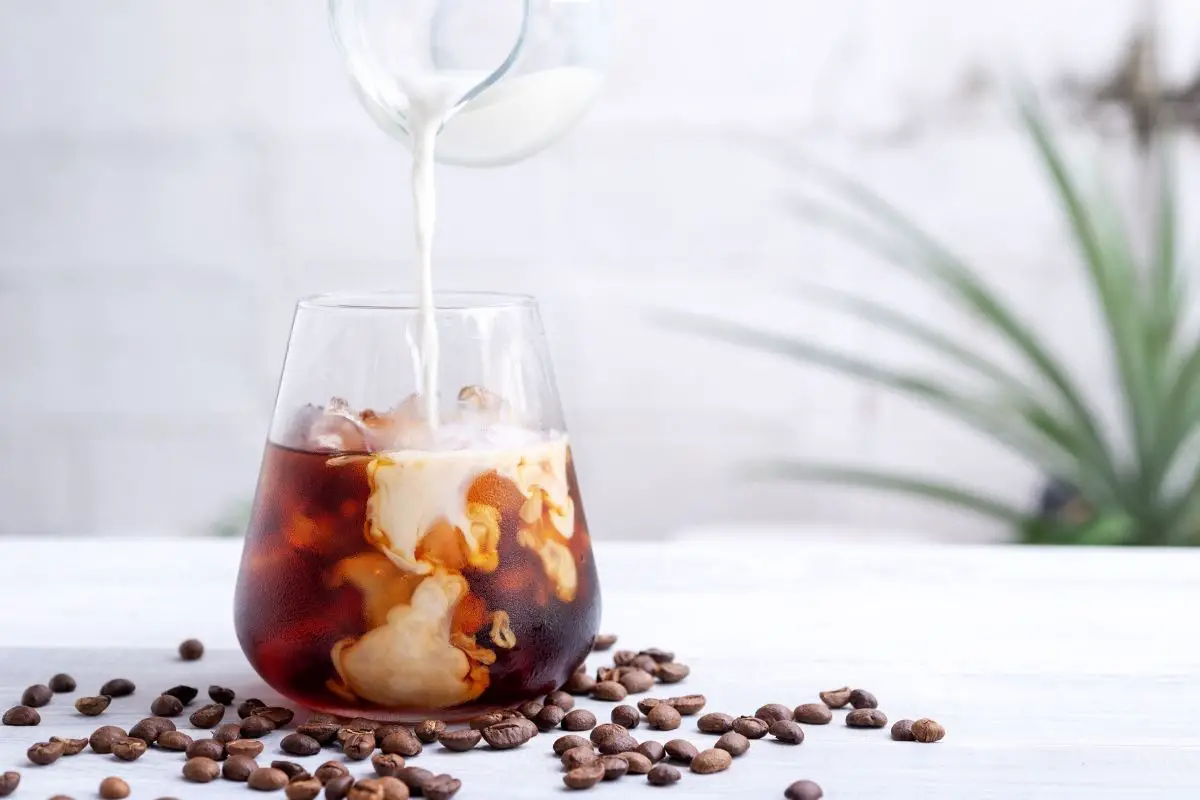Cold brew coffee has gained popularity for its smooth and rich flavor, but some people find it too acidic for their taste. If you’re looking to enjoy the benefits of cold brew without the acidity, there are several techniques you can try.

New Africa/shutterstock.com
By adjusting the grind size, brewing time and temperature, diluting with water or milk, adding a pinch of baking soda, experimenting with different roasts, or using a cold brew maker with a built-in filtration system, you can achieve a less acidic cup of cold brew.
In this article, we will explore these methods in detail, providing you with the knowledge and information you need to make your cold brew less acidic. Whether you have a sensitive stomach or simply prefer a milder taste, these techniques will help you create a smooth and enjoyable cold brew experience.
So, let’s dive in and discover how to make cold brew less acidic.
Key Takeaways
- Adjusting the grind size, brewing time, and temperature can help make cold brew less acidic.
- Diluting cold brew with water or milk can reduce acidity and enhance drinkability.
- Adding a pinch of baking soda to cold brew can neutralize acidity and provide a smoother taste.
- Using a cold brew maker with a built-in filtration system ensures a smoother and less acidic cup of coffee.
Use a Coarser Grind for Your Coffee Beans

Using a coarser grind for your coffee beans in the process of making cold brew results in larger grounds that extract fewer acids, leading to a smoother and less acidic final product. The size of the coffee grounds plays a crucial role in the extraction process, as it determines the surface area available for the water to come into contact with. When the grind is coarser, the water has less contact with the coffee grounds, resulting in a lower extraction of acids. This is because larger grounds allow for a slower extraction process, giving the water less time to dissolve the acids present in the coffee beans.
To achieve a coarser grind, it is recommended to adjust the settings on your coffee grinder or purchase pre-ground coffee labeled specifically for cold brew. It is important to note that the grind size should be consistent throughout to ensure even extraction. Additionally, using a burr grinder instead of a blade grinder can help achieve a more uniform grind size.
Experimenting with brewing time and temperature will further enhance the reduction of acidity in your cold brew. By adjusting the brewing time and temperature, you can control the extraction process and tailor it to your taste preferences.
Experiment with Brewing Time and Temperature
By varying the duration and temperature of the brewing process, one can observe a significant decrease in the overall acidity level of the resulting cold brew. Adjusting the brewing time and temperature allows for customization of the cold brew flavor, creating a smoother and less acidic taste.
Here are some factors to consider when experimenting with brewing time and temperature:
- Longer brewing time: Increasing the brewing time can lead to a less acidic cold brew. Allowing the coffee grounds to steep for a longer period of time allows for more extraction of flavor compounds, resulting in a milder taste.
- Lower brewing temperature: Brewing cold brew at a lower temperature, such as in the refrigerator, can also reduce acidity. This slower extraction process results in a smoother, less acidic brew.
- Cold brew concentrate: Making a cold brew concentrate by using a higher coffee-to-water ratio and diluting it before consumption can help reduce acidity. This allows for better control over the final acidity level, ensuring a more balanced taste.
- Cold brewing method: Using a slow drip cold brew method, such as a cold drip tower, can also result in a less acidic brew. This method allows for a gradual extraction of flavors, resulting in a smoother and less acidic taste.
- Experimentation: Each coffee bean and personal preference may require different brewing times and temperatures. It is important to experiment and find the combination that suits your taste.
By adjusting the brewing time and temperature, one can achieve a less acidic cold brew, providing a safer and more enjoyable coffee experience.
Transitioning into the subsequent section about diluting cold brew with water or milk, the next step is to further customize the taste by diluting the cold brew with your preferred choice of liquid.
Dilute Your Cold Brew with Water or Milk

To achieve a more balanced flavor profile, one can incorporate water or milk to dilute the concentrated cold brew. Dilution not only reduces the acidity of the cold brew but also enhances its drinkability. Adding water or milk to cold brew can be done according to personal preference, with the amount adjusted to achieve the desired taste. A simple way to dilute cold brew is by using a 2:1 ratio, where two parts cold brew are mixed with one part water or milk. This ratio can be adjusted based on individual taste preferences.
To demonstrate the effect of dilution on acidity, the following table compares the pH levels of undiluted cold brew and different dilution ratios:
| Dilution Ratio | pH Level |
|---|---|
| Undiluted | 4.5 |
| 2:1 | 5.5 |
| 3:1 | 6.0 |
| 4:1 | 6.5 |
| 5:1 | 7.0 |
As shown in the table, diluting cold brew with water or milk raises the pH level, reducing the overall acidity. This can make the cold brew more palatable for those who find highly acidic beverages unpleasant.
By diluting cold brew with water or milk, one can achieve a more balanced and less acidic flavor. However, if further acidity reduction is desired, adding a pinch of baking soda to the cold brew can be effective. [Transition into the subsequent section about ‘add a pinch of baking soda to your cold brew’]
Add a Pinch of Baking Soda to Your Cold Brew
Adding a small amount of baking soda to your cold brew can effectively reduce its acidity, providing a smoother and more enjoyable drinking experience. Baking soda, also known as sodium bicarbonate, is a basic compound that can help neutralize the acidity in coffee.
When added to cold brew, baking soda reacts with the acidic compounds present in the coffee, resulting in a reduction of the overall acidity.
To use baking soda in your cold brew, start by brewing your coffee as usual. Once the cold brew is ready, add a pinch of baking soda to the brewed coffee and stir well to ensure it is fully dissolved. It is important to note that a little goes a long way, so only a small amount of baking soda is needed to achieve the desired effect.
Additionally, it is recommended to taste the cold brew after adding baking soda to ensure that the acidity is at a desirable level.
By adding baking soda to your cold brew, you can enjoy a less acidic cup of coffee without compromising on flavor. This method is particularly useful for individuals who have sensitive stomachs or are looking for a less acidic alternative.
Moving forward, you can also explore the option of trying different roasts of coffee beans to further tailor the acidity level to your preferences.
Try Different Roasts of Coffee Beans
Different roasts of coffee beans can significantly alter the acidity level of your cup of coffee, but which roast is the best choice for achieving your desired flavor profile? Understanding the impact of different roasts on acidity can help you make an informed decision.
- Light Roast: Lightly roasted coffee beans tend to have a higher level of acidity. This roast brings out the bright and vibrant flavors of the coffee, but it may also result in a more acidic taste.
- Medium Roast: Medium roasted beans strike a balance between acidity and flavor. They have a slightly lower acidity compared to light roasts while still retaining a good amount of flavor.
- Dark Roast: Dark roasted beans have the lowest acidity levels. The longer roasting process breaks down the acidity, resulting in a smoother and less acidic cup of cold brew. However, it’s important to note that dark roasts can also have a stronger and more intense flavor profile.
By choosing the right roast for your cold brew, you can achieve a desired acidity level that suits your taste preferences.
To further enhance your cold brew experience, consider using a cold brew maker with a built-in filtration system, which we will discuss in the next section.
Use a Cold Brew Maker with a Built-in Filtration System
A cold brew maker equipped with a built-in filtration system ensures a smooth and refined extraction process, resulting in a clean and pure cup of coffee. This type of coffee maker is specifically designed to minimize acidity in cold brew coffee.
The filtration system efficiently removes any unwanted sediments or oils, resulting in a beverage that is less acidic and smoother on the palate. The cold brew maker’s filtration system consists of a fine mesh or paper filter that effectively traps coffee grounds and other particles, ensuring that only the desired liquid passes through. This filtration process eliminates the need for additional steps, such as straining the coffee manually, which can introduce more acidity by exposing the brew to oxygen.
Additionally, the built-in filtration system helps to maintain the overall quality and safety of the cold brew coffee. By removing any impurities, it reduces the risk of contamination and ensures a clean and hygienic beverage. This is particularly important for individuals who prioritize safety and are cautious about potential health risks.
Overall, using a cold brew maker with a built-in filtration system is an excellent choice for those seeking a less acidic cold brew experience. Not only does it produce a smooth and refined cup of coffee, but it also provides the assurance of a safe and clean beverage.
Frequently Asked Questions
How can I make my cold brew less acidic without using a coarser grind for my coffee beans?
To reduce the acidity of cold brew without adjusting the grind size, consider using a coffee blend with lower acidity, such as a dark roast. This can provide a smoother flavor profile while maintaining the desired strength and aroma.
What is the ideal brewing time and temperature to reduce acidity in cold brew?
The ideal brewing time and temperature to reduce acidity in cold brew is a subjective topic. However, a general recommendation is to brew for 12-24 hours at a temperature range of 32-40°F (0-4°C) to achieve a smoother, less acidic taste.
Is it necessary to dilute cold brew with water or milk to make it less acidic?
Diluting cold brew with water or milk is not necessary to reduce its acidity. However, some individuals may prefer to do so for personal taste preferences. Dilution can help to mellow the flavor and make it more palatable for those who find it too acidic.
Can I use something other than baking soda to lower the acidity in my cold brew?
Alternative methods, such as using a pinch of salt or adding crushed eggshells, can be employed to reduce acidity in cold brew. These methods are safe and effective in achieving a less acidic taste.
Are there any other methods to decrease acidity in cold brew besides using a cold brew maker with a built-in filtration system?
Other methods to decrease acidity in cold brew include using a coarser grind size, decreasing brewing time, and using a higher coffee-to-water ratio. These techniques can help create a smoother and less acidic cold brew coffee.
Conclusion
In conclusion, there are several methods to make cold brew less acidic.
Adjusting the grind size of the coffee beans, experimenting with brewing time and temperature, diluting with water or milk, adding a pinch of baking soda, trying different roasts, or using a cold brew maker with a built-in filtration system can all contribute to reducing acidity.
By employing these techniques, you can transform your cold brew into a smoother and more enjoyable beverage, like a gentle breeze on a warm summer’s day.
Related articles: